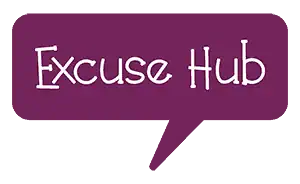Excuses for Having Red Eyes: A Must-Read Guide
You might have red eyes due to several common factors, and there are many excuses for having red eyes that can help explain this condition. Allergies often cause inflammation and increased blood flow, especially during pollen-heavy seasons. Lack of sleep and late-night activities can lead to noticeable redness, as your body compensates for fatigue. Screen time overload contributes to eye strain, reducing blinking and increasing irritation. Issues with dry eye syndrome may arise from environmental conditions and prolonged digital exposure. Finally, emotional responses, such as recently crying, can also result in red eyes. If you stick around, you’ll discover more about managing these eye concerns effectively.
Key Takeaways
- Allergies to pollen, dust mites, or pet dander can cause red, irritated eyes due to inflammation and increased blood flow.
- Prolonged screen time can lead to digital eye strain, resulting in redness and discomfort from reduced blinking.
- Lack of sleep dilates blood vessels in the eyes, causing noticeable redness and increased irritation.
- Crying can temporarily redden eyes due to increased blood flow and irritation from tears.
- Poor contact lens hygiene or improper fit can lead to irritation and persistent redness in the eyes.
Allergies Acting Up
When allergies act up, your eyes may become red and irritated due to inflammation and increased blood flow in response to allergens. Seasonal allergies, particularly those triggered by pollen exposure, are common culprits. As you encounter pollen from trees, grasses, or weeds, your immune system identifies these particles as threats, initiating an inflammatory response. This reaction leads to the release of histamines, which cause blood vessels in your eyes to dilate, resulting in redness and discomfort.
You might also experience additional symptoms, including itching, tearing, and swelling. The severity of these reactions can vary depending on the type and amount of pollen in the air. Monitoring local pollen counts can help you anticipate flare-ups and manage your symptoms more effectively.
Avoiding outdoor activities during high pollen times, keeping windows closed, and using air purifiers can minimize exposure. Over-the-counter antihistamines may also provide relief by counteracting the effects of histamines on your eyes.
Understanding how pollen exposure affects your body is essential for managing seasonal allergies and preventing red, irritated eyes.
Late Night Adventures
Late night adventures often lead to red eyes due to various activities.
Wild party nights, extended screen time, and spontaneous road trips can all contribute to eye irritation and fatigue.
Understanding these factors can help you identify the cause of your red eyes after a late night.
Wild Party Nights
Wild party nights often lead to a combination of alcohol consumption, lack of sleep, and exposure to smoke, all of which contribute to the appearance of red eyes. After a night filled with wild shenanigans, your body undergoes several physiological changes that can manifest visibly.
Alcohol acts as a vasodilator, causing blood vessels in your eyes to expand, resulting in a reddened appearance. Additionally, staying up late disrupts your natural sleep cycle, leading to fatigue and increased redness. Your eyes require adequate rest to rejuvenate; without it, they can appear dry, irritated, and inflamed.
Moreover, smoke exposure—whether from cigarettes or other sources—can exacerbate these conditions by irritating the conjunctiva, the membrane covering your eyes. The party aftermath can leave you with more than just a headache; it can also lead to lingering redness in your eyes.
To mitigate these effects, consider staying hydrated, using lubricating eye drops, and ensuring you get sufficient sleep post-party. By understanding these factors, you can better manage your eye health after those unforgettable nights out.
Midnight Screen Time
Extended screen time during late-night adventures can lead to considerable eye strain and redness due to prolonged exposure to blue light and reduced blinking.
As you engage in midnight productivity, whether working on a project or indulging in binge-watching habits, your eyes are subjected to unnatural stress. This exposure disrupts your circadian rhythm, making it harder for your body to wind down.
When you stare at screens for extended periods, your blink rate decreases notably, causing your eyes to dry out. This dryness contributes to irritation and redness, making your eyes appear fatigued. Additionally, blue light emitted from screens can interfere with melatonin production, further exacerbating the issue.
To mitigate these effects, it’s essential to take frequent breaks by following the 20-20-20 rule: every 20 minutes, look at something 20 feet away for 20 seconds.
Consider using blue light-blocking glasses or adjusting your screen settings to reduce blue light emission. Prioritizing your eye health during those late-night escapades will help you maintain comfort and clarity, allowing you to fully enjoy your midnight adventures without the burden of red, strained eyes.
Spontaneous Road Trips
After a night of screen time, you might find yourself setting out on spontaneous road trips, which can introduce additional challenges for your eyes, especially during late-night driving. The sudden shift from artificial light to darkness strains your vision, leading to discomfort and potential redness. These situations can be common excuses for having red eyes.
As you navigate unfamiliar routes, unexpected detours can additionally exacerbate these issues. The need to quickly adjust to new surroundings can force your eyes to work harder, increasing fatigue. Additionally, while scenic views may provide a welcome distraction, they can also require intense focus, leading to additional strain.
To mitigate these effects, make certain you take regular breaks. Pulling over for a few minutes allows your eyes to relax and refocus. Utilize eye drops designed to relieve dryness, as they can provide immediate relief during these late-night adventures. In addition, maintaining good hydration helps keep your eyes moist.
Ultimately, understanding the impact of spontaneous road trips on your eye health can help you enjoy the experience without suffering from red, irritated eyes. Prioritize your vision, and you’ll create lasting memories without the discomfort.
Screen Time Overload
Excessive screen time can lead to digital eye strain, causing discomfort and red eyes.
The blue light emitted from screens not only disrupts your sleep cycle but also contributes to eye fatigue.
Understanding these effects can help you take proactive steps to reduce eye strain and maintain eye health.
Digital Eye Strain
Prolonged exposure to digital screens can lead to digital eye strain, causing discomfort and redness in your eyes. This condition often results from extended screen time without adequate breaks, leading to symptoms such as dryness, blurred vision, and headaches.
To combat this, you can implement eye relaxation techniques that reduce strain. The 20-20-20 rule is particularly effective: every 20 minutes, take a 20-second break and look at something 20 feet away. This simple practice helps your eyes refocus and alleviates fatigue.
In addition to relaxation techniques, consider adopting digital detox strategies. Reducing screen time, especially before bed, can greatly improve your eye comfort.
Designate screen-free periods during your day to give your eyes a much-needed break. Engaging in outdoor activities or hobbies that don’t involve screens can also promote eye health.
Blue Light Exposure
Constantly staring at screens exposes your eyes to high levels of blue light, which can contribute to eye fatigue and discomfort. Blue light, emitted by devices like smartphones, tablets, and computers, penetrates deeper into the eye than other types of light. This exposure can disrupt your circadian rhythms and lead to increased strain on your visual system.
To mitigate the effects of blue light, consider implementing eye protection strategies. First, adjust your device settings to enable blue light filters or use apps designed to reduce blue light emission. Additionally, wearing specialized blue light-blocking glasses can help shield your eyes during prolonged screen time.
Incorporating the 20-20-20 rule can also alleviate some discomfort. Every 20 minutes, take a 20-second break and focus on something at least 20 feet away. This practice allows your eyes to relax and reduces the cumulative strain caused by excessive screen exposure.
Lack of Sleep
Lack of sleep often leads to noticeable redness in the eyes due to increased blood flow and irritation. When you’re experiencing sleep deprivation, your body reacts by dilating blood vessels to compensate for fatigue. This dilation contributes to the redness you observe in your eyes. Restless nights can exacerbate this effect, as the disruptions in your sleep cycle prevent your body from fully recovering.
During deep sleep, your body undergoes restorative processes that help reduce inflammation and promote overall eye health. Without sufficient restful sleep, these processes are hindered, leading to an accumulation of irritants and a decrease in moisture levels. Consequently, your eyes may appear bloodshot and tired.
Moreover, sleep deprivation affects your immune system, making it harder for your body to combat allergens and irritants that can further aggravate redness. If you frequently experience restless nights, consider establishing a regular sleep schedule and creating a calming bedtime routine to enhance your sleep quality.
Dry Eye Syndrome
Experiencing dry eye syndrome can lead to significant irritation and redness in your eyes, as insufficient tear production fails to keep them properly lubricated. When your eyes lack adequate lubrication, you might notice discomfort that can impact your daily life.
Here are three common causes of dry eye syndrome:
- Environmental Factors: Exposure to wind, smoke, or dry air can increase evaporation of tears, leading to dryness.
- Screen Time: Prolonged use of digital devices often reduces blink rates, which affects tear distribution and eye lubrication.
- Hormonal Changes: Conditions like menopause can alter tear production, resulting in dry eyes.
To manage dry eye syndrome effectively, it’s important to identify triggers and consider treatments that enhance eye lubrication.
Artificial tears can help supplement natural tears, while lifestyle modifications, such as taking regular breaks from screens, can improve your tear production and overall eye health.
If symptoms persist, consulting an eye care professional is vital for personalized recommendations and potential treatments.
Addressing dry eye syndrome not only alleviates discomfort but also reduces the likelihood of further complications associated with insufficient eye lubrication.
Contact Lens Issues
Contact lens issues can exacerbate symptoms of dry eye syndrome, leading to increased redness and discomfort in your eyes. Poor lens hygiene is a considerable contributor to these problems. If you neglect to clean your lenses properly or wear them beyond their recommended duration, you risk bacterial buildup, which can irritate your eyes and cause redness.
Moreover, an improper fit can also worsen your situation. Lenses that aren’t fitted correctly can cause friction against your cornea, leading to discomfort and inflammation. If you experience persistent redness, it might be time to consult your eye care professional for a proper assessment.
Additionally, consider switching to lenses designed specifically for dry eyes, as they can provide more moisture and comfort. Always verify you’re following the manufacturer’s guidelines for wear and care. Avoid sleeping in your lenses unless they’re specifically designed for overnight use, as this can greatly increase the risk of complications.
Smoking or Secondhand Smoke
Smoking or exposure to secondhand smoke can profoundly irritate your eyes, leading to redness and discomfort. The chemicals in smoke, particularly nicotine, can cause inflammation and dilate blood vessels in your eyes, contributing to that unwanted red appearance.
If you find yourself experiencing this issue, consider the following factors regarding smoke exposure:
- Irritants: The various compounds in tobacco smoke, such as formaldehyde and ammonia, can exacerbate eye irritation. This irritation results in dryness, burning sensations, and redness.
- Allergic Reactions: Some individuals may have an allergic response to substances in smoke, heightening sensitivity and discomfort in the eyes, which can lead to further redness.
- Environmental Impact: Living or spending time in environments where smoking occurs can lead to chronic exposure, compounding the nicotine effects on your ocular health over time.
To mitigate these issues, it’s crucial to minimize exposure to smoke and consider the health risks associated with both smoking and secondhand smoke. Prioritizing a smoke-free environment can greatly improve your eye comfort and overall well-being.
Recent Crying Session
A recent crying session can lead to red eyes due to increased blood flow and irritation from tears, which may cause your eyes to appear puffy and discolored.
When you cry, your body releases stress hormones and engages in an emotional release. This process can be triggered by various factors, often unexpected triggers, such as a poignant memory, a touching scene in a movie, or even a conversation that strikes a deep emotional chord.
The tears produced during crying contain not only water but also proteins and enzymes that can irritate the sensitive tissues around your eyes. This irritation leads to vascular dilation, resulting in the reddened appearance of your eyes. The extent of redness can vary based on the duration and intensity of your crying session.
Additionally, crying can cause temporary swelling in the eyelids and surrounding areas, further contributing to the overall puffy look.
It’s essential to acknowledge that these physical manifestations are normal responses to emotional stress. Understanding this can help you manage situations where you might need to explain your red eyes, emphasizing that it’s a natural reaction rather than a sign of illness or distress.
Environmental Irritants
Environmental irritants can trigger red eyes by causing inflammation and irritation of the conjunctiva, the thin membrane covering the eye. These irritants can come from various sources, and understanding them is vital for managing your eye health.
Here are three common environmental irritants that can lead to red eyes:
- Air Quality: Poor air quality, often due to pollution, can introduce harmful particles that irritate your eyes. High levels of smog and exhaust fumes can exacerbate symptoms, especially for those with pre-existing conditions.
- Pollen Levels: During certain seasons, elevated pollen levels can provoke allergic reactions, leading to redness and discomfort. Trees, grasses, and weeds release pollen that can trigger significant irritation in sensitive individuals.
- Dust and Pet Dander: Common household irritants like dust mites and pet dander can also contribute to red eyes. These particles can linger in the air, making it essential to maintain a clean environment.
Conclusion
To summarize, whether it’s allergies flaring up like a sudden storm or a late-night adventure reminiscent of Peter Pan’s escapades, there are numerous reasons for your red eyes.
Screen time overload can feel like staring into Medusa’s gaze, while dry eye syndrome mimics the arid landscape of a desert.
Understanding these excuses for having red eyes not only helps you find relief but also empowers you to protect your eye health, ensuring clarity and comfort in your daily life.
Frequently Asked Questions
Can Red Eyes Indicate a More Serious Health Issue?
Yes, red eyes can indicate more serious health issues. You should consider underlying conditions like allergies, infections, or even systemic diseases. Regular eye health check-ups are essential to identify and address potential problems early.
How Long Will Red Eyes Typically Last?
Red eyes typically last from a few hours to several days, depending on duration factors like allergies or irritation. You’ll notice redness variations based on your environment and health, so monitor your symptoms closely.
Are There Home Remedies for Red Eyes?
Yes, there are effective home remedies for red eyes. You can apply a cold compress to reduce inflammation or place cucumber slices over your eyes to soothe irritation and hydrate the area, promoting comfort and relief.
When Should I See a Doctor for Red Eyes?
You should see a doctor for red eyes if they persist beyond a few days, worsen, or accompany severe symptoms like pain or vision changes. Consider allergy triggers and eye strain as potential underlying causes.
Can Certain Foods Cause Red Eyes?
Did you know that about 20% of people experience allergy symptoms linked to their diet? Certain foods can indeed trigger these reactions, causing red eyes due to inflammation and irritation. Monitor your diet for potential culprits.







